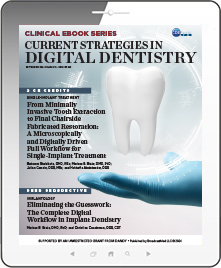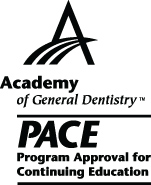CDEWorld > eBooks > Current Strategies in Digital Dentistry


ADA CERP is a service of the American Dental Association to assist dental professionals in identifying quality providers of continuing dental education. ADA CERP does not approve or endorse individual courses or instructors, nor does it imply acceptance of credit house by boards of dentistry. Concerns or complaints about a CE provider may be directed to the provider or to ADA CERP at www.ada.org/cerp/

Approved PACE Program Provider. FAGD/MAGD credit. Approval does not imply acceptance by a state or provincial board of dentistry, or AGD endorsement. 1/1/2023 to 12/31/2028. ID # 209722.
eBook
Released: Thursday, September 19, 2024
Expires: Thursday, September 30, 2027
Current Strategies in Digital Dentistry
Commercial Supporter: Dandy
This thematic CDEWorld eBook on digital dentistry features a continuing education (CE) article on a microscopically guided and digital workflow for single-implant treatment. This eBook also includes an article outlining a complete digital workflow in implant dentistry, beginning with patient digitalization obtained by scanning of hard and soft tissues, and completed with guided dentistry.
FEATURED CONTENT
CE: From Minimally Invasive Tooth Extraction to Final Chairside Fabricated Restoration: A Microscopically and Digitally Driven Full Workflow for Single-Implant Treatment
Behnam Shakibaie, DMD, MSc; Markus B. Blatz, DMD, PhD; Julian Conejo, DDS, MSc; and Huthaifa Abdulqader, DDS
This continuing education article highlights a case study that demonstrates a complete chairside digital workflow using minimally invasive and microscopic techniques, and details treatment that includes tooth extraction and socket preservation, implant insertion, soft-tissue management, and delivery of the final chairside-fabricated restoration.
Credits: 2 Self-Study CEU
Cost: $0
Provider: Conexiant Education
Eliminating the Guesswork: The Complete Digital Workflow in Implant Dentistry
Markus B. Blatz, DMD, PhD; and Christian Coachman, DDS, CDT
This article provides a concise and engaging overview of a digital workflow that can be used in dental implant treatment, and discusses how increased precision and predictability in implant placement, as well as fabrication of the definitive restoration, can be achieved with this workflow.


